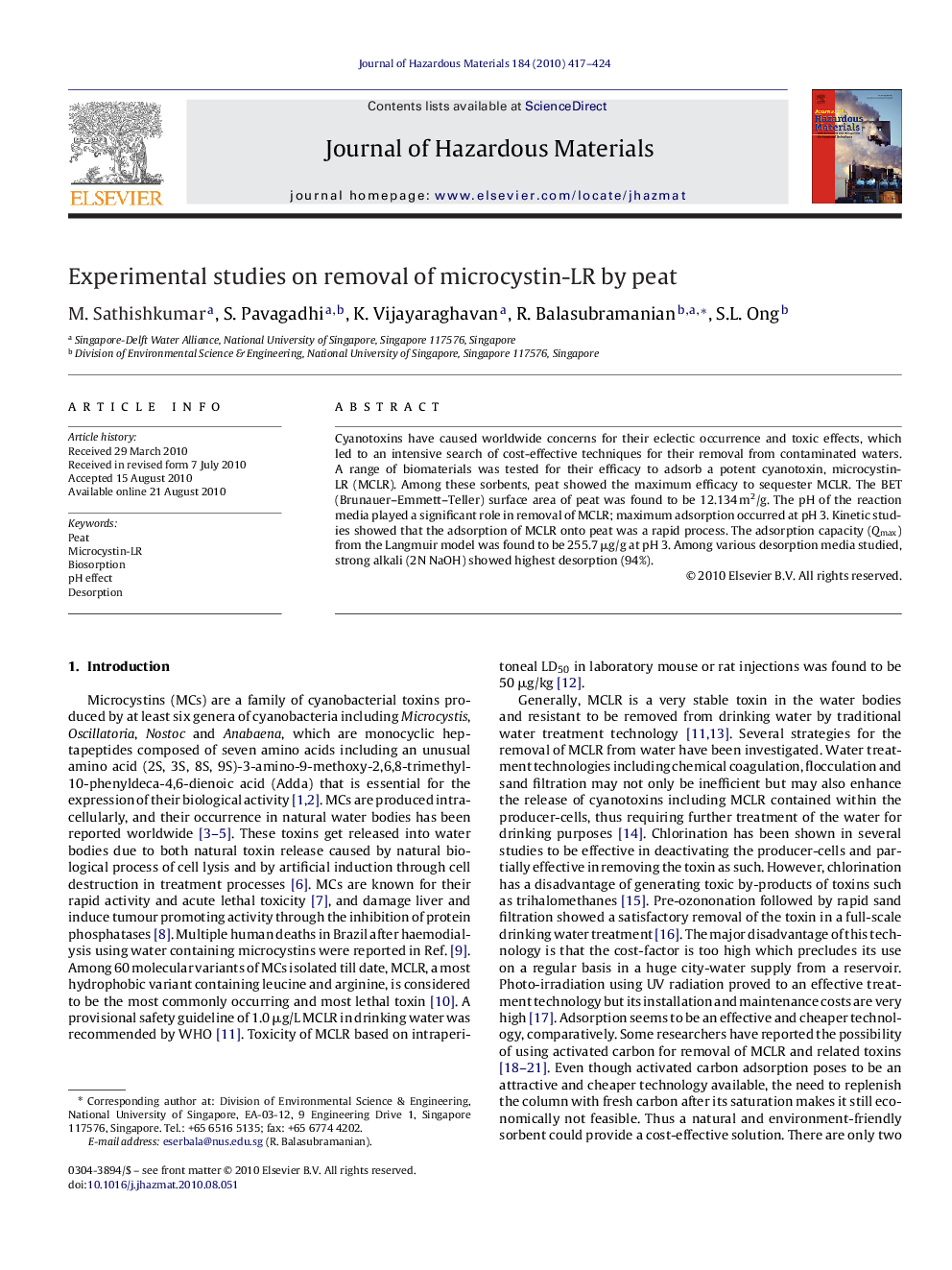| Article ID | Journal | Published Year | Pages | File Type |
|---|---|---|---|---|
| 580181 | Journal of Hazardous Materials | 2010 | 8 Pages |
Abstract
Cyanotoxins have caused worldwide concerns for their eclectic occurrence and toxic effects, which led to an intensive search of cost-effective techniques for their removal from contaminated waters. A range of biomaterials was tested for their efficacy to adsorb a potent cyanotoxin, microcystin-LR (MCLR). Among these sorbents, peat showed the maximum efficacy to sequester MCLR. The BET (Brunauer-Emmett-Teller) surface area of peat was found to be 12.134 m2/g. The pH of the reaction media played a significant role in removal of MCLR; maximum adsorption occurred at pH 3. Kinetic studies showed that the adsorption of MCLR onto peat was a rapid process. The adsorption capacity (Qmax) from the Langmuir model was found to be 255.7 μg/g at pH 3. Among various desorption media studied, strong alkali (2N NaOH) showed highest desorption (94%).
Related Topics
Physical Sciences and Engineering
Chemical Engineering
Chemical Health and Safety
Authors
M. Sathishkumar, S. Pavagadhi, K. Vijayaraghavan, R. Balasubramanian, S.L. Ong,
